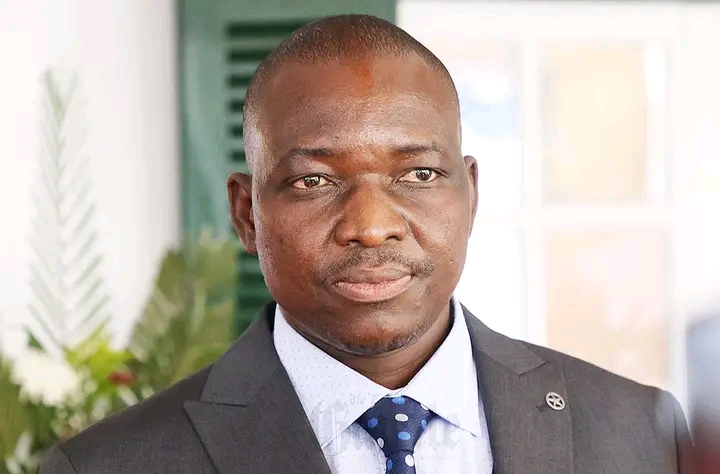Minister Zhemu Soda
By Dickson Bandera
Minister of Mines and Mining Development, Hon Zhemu Soda has deployed teams across the country in an effort to plug existing gold leakages in different parts of the country.
The mining sector has registered tremendous growth in the New Dispensation but has been saddled with challenges, chief among them side marketing and smuggling of the minerals.
Although substantial effort in addressing the loopholes have born fruit in the past, statistics on the ground indicate that there is still much to be done.
According to a 2022 report by the Centre for Natural Resources Governance, Zimbabwe is losing around 33 tonnes of gold annually to side marketing and smuggling of gold.
This is a sad reality given that gold, alongside platinum, diamonds, coal and hydrocarbons, chrome, and lithium, is a key contributor to the country’s Gross Domestic Product.
In Zimbabwe, Fidelity Gold Refinery is the sole legitimate entity authorized to buy, refine and export gold. This implies that all gold mined in Zimbabwe should be channeled to Fidelity.
With a view of ring-fencing the industry and ensuring that gold finds its way into the Fidelity Gold Refineries, the ministry came up with a number of strategies, among them the Gold Mobilization Strategy.
Under the strategy, officers drawn from various stakeholder sections are deployed across the country to gather critical information and make recommendations that will help plug loopholes in the sector.
On Monday 2 October, the Ministry dispatched 10 teams to provinces carry out the 2023 Third Quarter Gold Mobilization Exercise.
The six targeted provinces were Masvingo, Matabeleland North, Mashonaland Central, Midlands, Manicaland and Mashonaland West.
During his send off speech, Minister Zhemu stressed the importance of the Gold Mobilisation Exercise.
“We are gathered here today to deploy 10 teams whose mandate would be to thoroughly inspect and ensure that all stakeholders account for all gold which would have passed through their hands. The monitoring and surveillance exercise is meant to boost gold deliveries onto the legal market and increase its accountability by stakeholders,” said Minister Soda.
“This is imperative to note that gold mobilisation continues to be one of the projects that Government has identified to spearhead the growth of the mining sector and the Zimbabwean economy in general.
“In 2022 the gold deliveries to Fidelity Gold Refinery stood at 35.2 tonnes which was above the set target. The 2023 gold deliveries to FGR set target stand at 40 tonnes. The key to realising this target is the plugging of side markets which are a pariah to our efforts in the mining sector and to the development that we hope to see achieved,” he said.
Minister Zhemu also emphasized the need for compliance enforcement.
“Despite the increase in gold delivery, it is widely believed by stakeholders that these deliveries fall short of possible gold produced in Zimbabwe during this period due to rampant side marketing, which calls for enhanced compliance enforcement in the sector,” he said.
Minister Soda revealed that there was a worrisome 13% decrease in gold deliveries in 2023 as compared to 2022, and this he attributed much to rampant side marketing.
“For or 2023 from January to August, the gold deliveries to FGR sits at 19.335 tonnes against a target of 40tonnes by the end of the year. In 2022 for the month of January to August a total of 22.29 tonnes was delivered, this representing a 13.2 % decrease. Hence, ladies and gentlemen there is a need to employ strategies to decrease the rampant side marketing of gold,” added the minister.
Fidelity Gold Refinery has decentralised its buying activities from Harare to cover all gold producing regions within the country, thereby significantly reducing the security risks associated with transporting gold over long distances.
Currently there are 13 gold buying centres namely Bulawayo, Kadoma, Gwanda, Chinhoyi, Shurugwi, Mutare, Bindura, Gweru, Kwekwe, Filabusi, Zvishavane, Makaha, Mutoko and Shurugwi.
The company has also appointed Gold Buying agents to conveniently mop gold produced in outlying areas and also from artisanal miners.
The minister said the Mobilisation Exercise continue to be improved and the officers should continue to innovate better ways of carrying out this important exercise.
“As we continue to improve the manner in which we conduct the exercise, the teams should continue with the innovative way of inspecting plants at each stage of production across the whole value chain,” he said.
Minister Soda reminded the attendants that mining is one of the key sectors that have a huge bearing on the success of Zimbabwe as a whole.
“As you may be aware ladies and gentlemen, the mining sector is expected to play a pivotal role in the attainment of the country’s vision of being an Upper Middle Income Economy by 2030 as enshrined in the National Development Strategy1 (NDS1) (2021-2025). The main minerals that are going to lead growth of the mining sector include gold,” he said.
“His Excellency, the President of the Republic of Zimbabwe, has implored us to work hard towards achieving the vision of an Upper Middle-Income Economy by the year 2030. We can achieve that through ensuring a sustainable gold mining industry given the value we can gain from this mineral,” he added.


